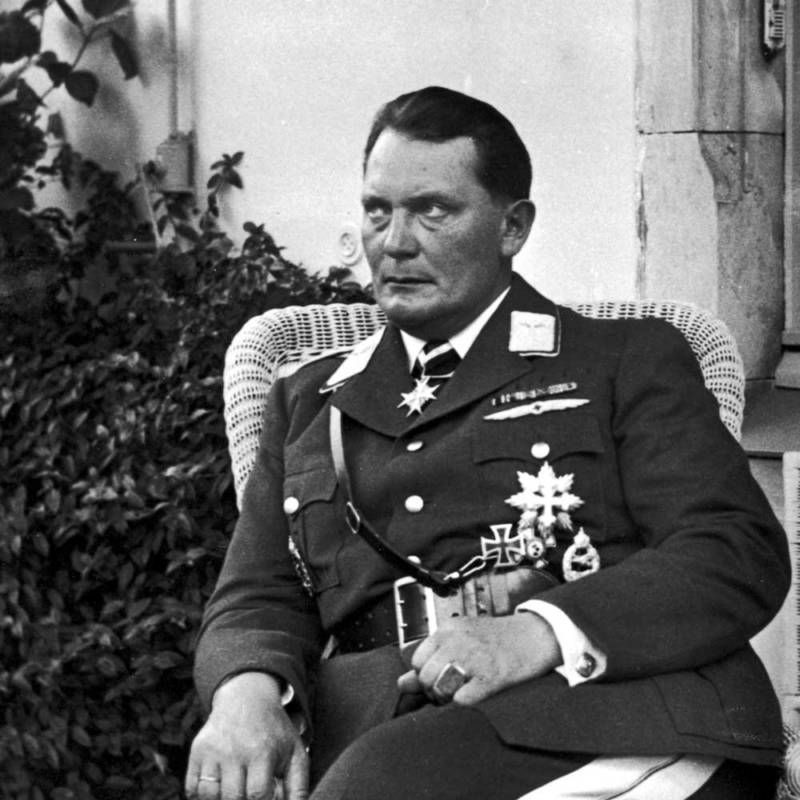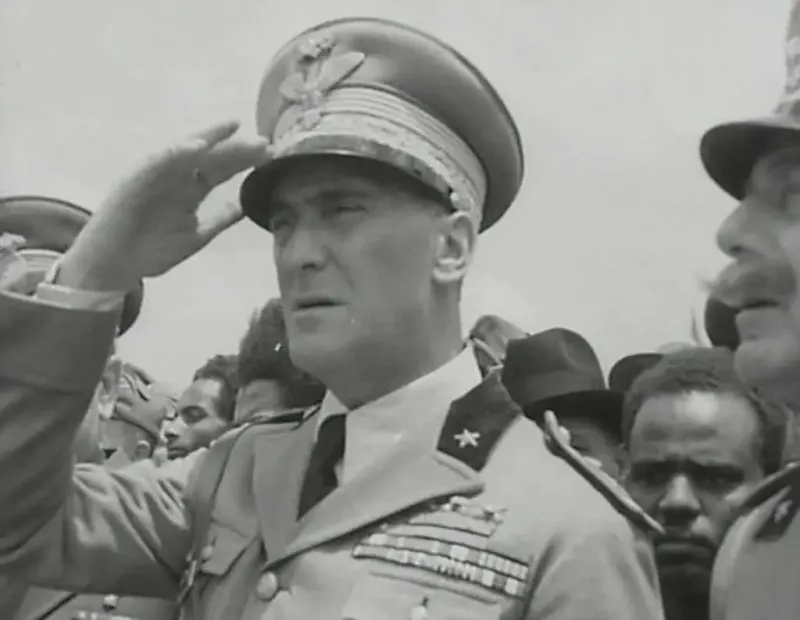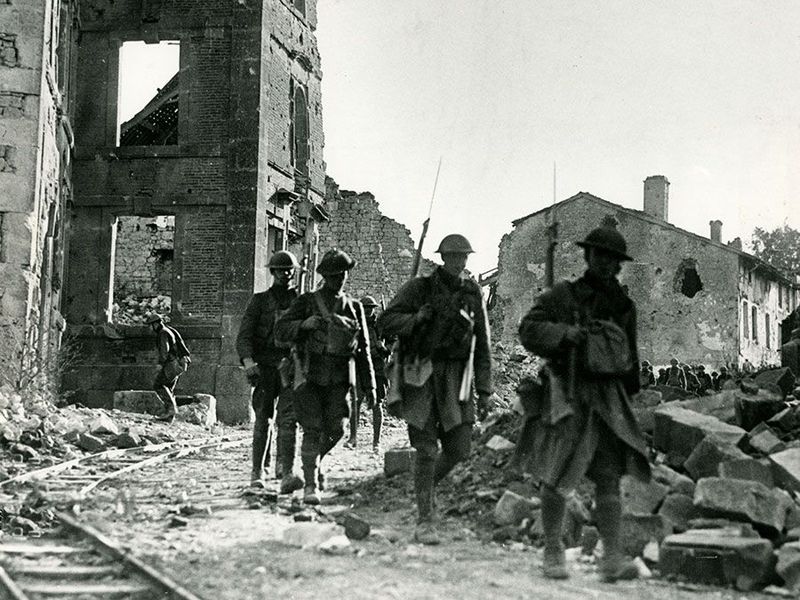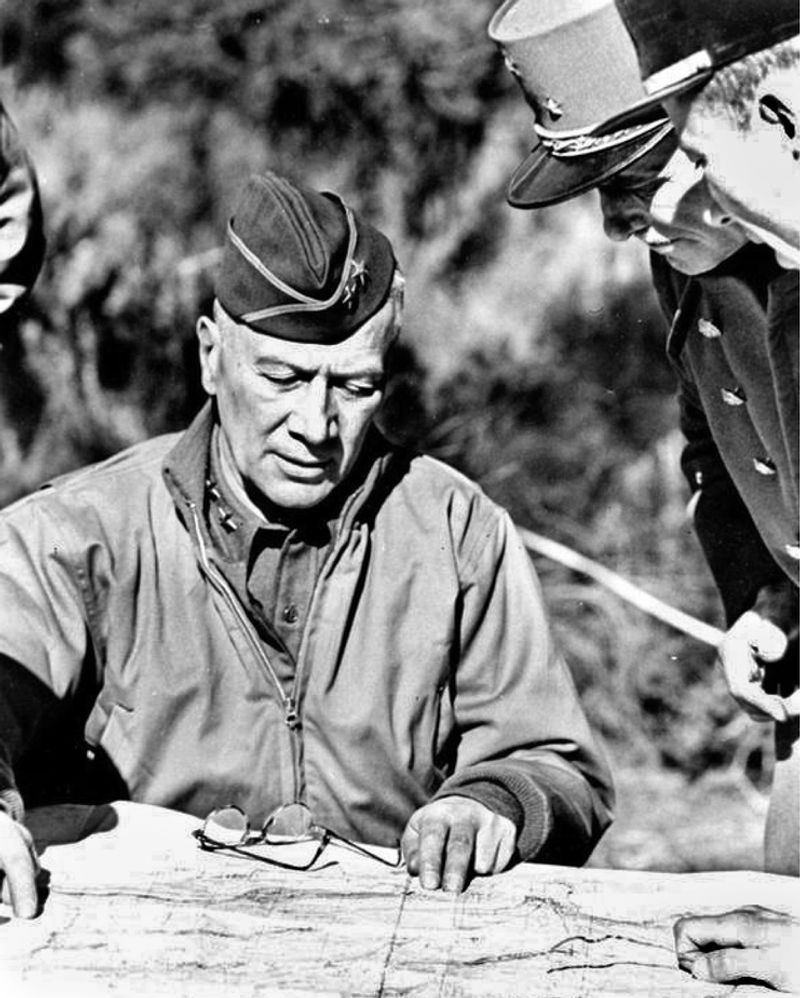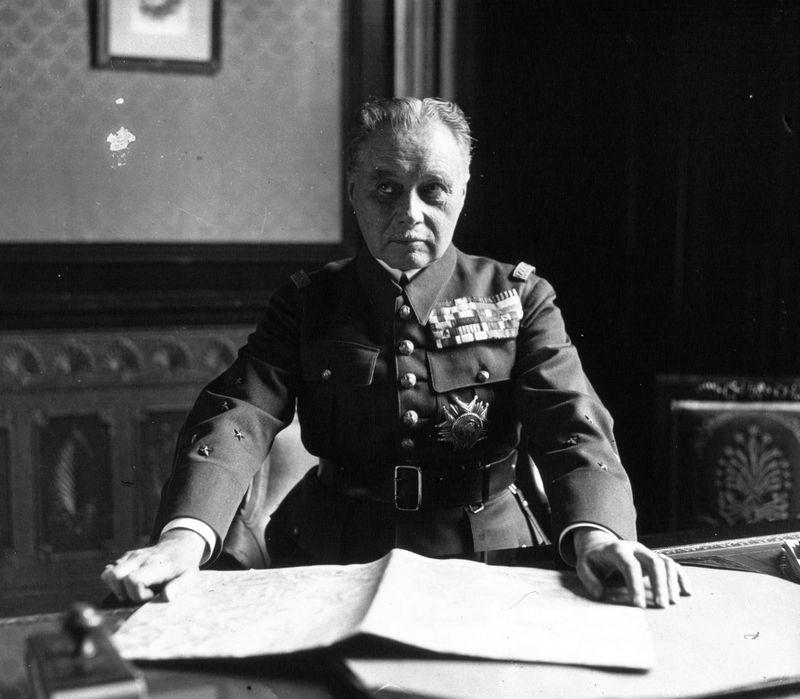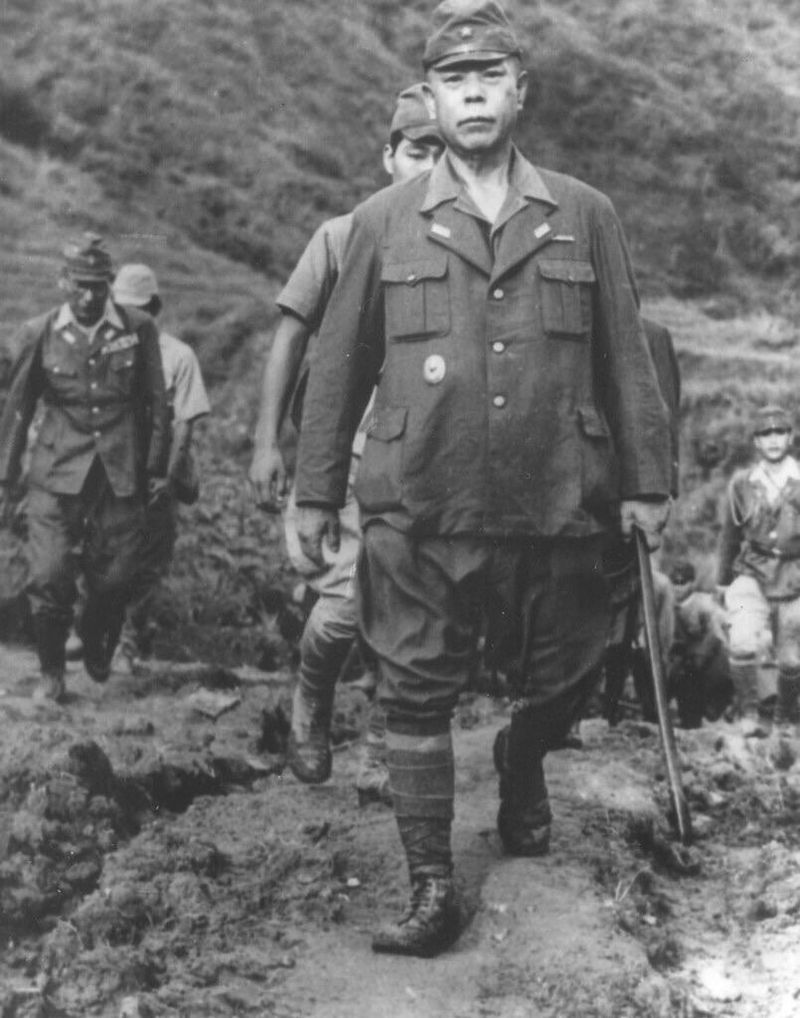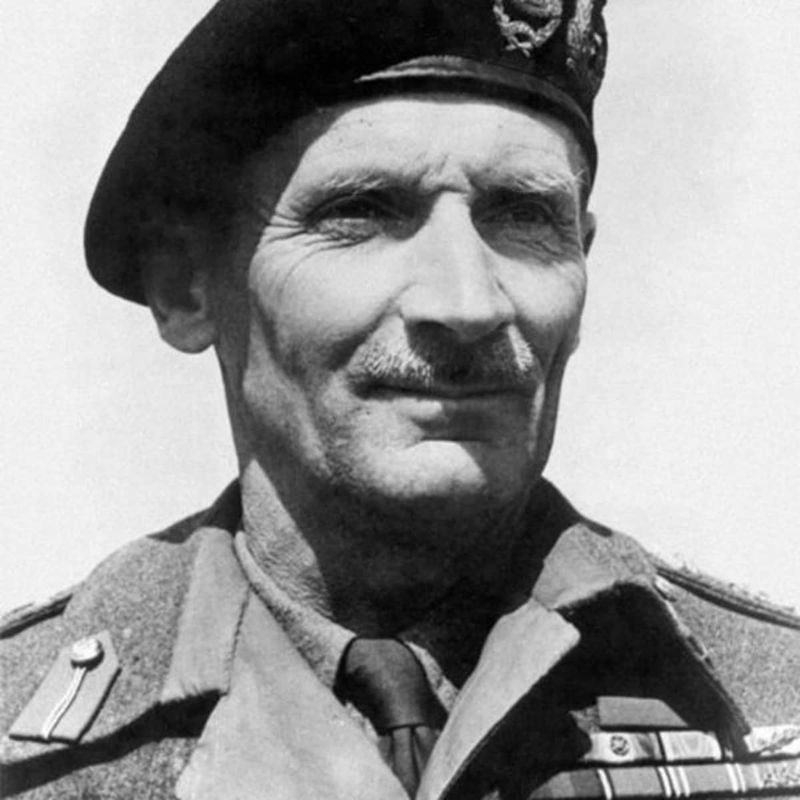World War II saw brilliant military minds leading armies to victory, but it also featured some spectacularly bad generals. These commanders made decisions that cost thousands of lives through poor planning, ego-driven choices, or simply being out of their depth. Their failures changed the course of battles and sometimes entire campaigns during history’s deadliest conflict.
1. General Douglas MacArthur (USA)
Catastrophically unprepared for Japan’s 1941 invasion of the Philippines, MacArthur left his aircraft sitting like ducks on runways despite clear warnings of imminent attack. His forces were decimated within hours.
MacArthur abandoned his troops to escape to Australia, famously promising “I shall return” while thousands of American soldiers suffered in Japanese prison camps. His ego-driven obsession with reclaiming the Philippines diverted crucial resources from more strategically important Pacific campaigns.
After WWII, his arrogance reached new heights in Korea when he dismissed intelligence about Chinese intervention, resulting in one of America’s most humiliating military retreats.
2. Field Marshal Hermann Göring (Germany)
Sporting gaudy uniforms adorned with medals he awarded himself, Göring was more concerned with personal wealth than military strategy. The once-capable pilot transformed into Hitler’s incompetent yes-man as the war progressed.
His most catastrophic blunder came during the Battle of Britain when he inexplicably shifted bombing from RAF airfields to civilian targets, giving British fighters crucial time to regroup. This single decision likely prevented Germany from gaining air superiority over England.
Later, his empty promise that the Luftwaffe could supply surrounded troops at Stalingrad sealed the fate of 250,000 German soldiers.
3. General Rodolfo Graziani (Italy)
Known as the “Butcher of Libya” for his colonial brutality, Graziani proved utterly incapable against trained military opponents. His 1940 invasion of Egypt stands as a textbook example of military incompetence.
With a massive numerical advantage of 250,000 troops against 30,000 British defenders, Graziani advanced a mere 60 miles before stopping to build elaborate camps. The British counterattack captured 130,000 Italian soldiers while losing only 500 of their own men.
Mussolini was forced to beg Hitler for help, leading to Rommel’s deployment to clean up Graziani’s colossal mess in North Africa.
4. General John “Jack” Fredrick Charles Fuller (UK)
Fuller pioneered tank warfare theory but spectacularly failed to implement it effectively. His rigid thinking and inability to adapt to battlefield realities led to British tanks being deployed piecemeal rather than in concentrated formations.
British armor was consequently decimated in North Africa, with Rommel using Fuller’s own theories against him. The irony wasn’t lost on German commanders who studied Fuller’s writings while he failed to follow his own advice.
Further undermining his military reputation, Fuller openly praised Hitler and Mussolini, eventually becoming an outspoken fascist sympathizer—an extraordinary betrayal from a British officer during history’s greatest fight against fascism.
5. General Lloyd Fredendall (USA)
Fredendall embodied military leadership at its worst during the 1943 Kasserine Pass battle. While German tanks approached, he hid in a bunker carved into a mountainside, absurdly located 70 miles behind the front lines.
From this distant hideout, he issued bewildering orders using personal codes only he understood: “Move your big red one to that place we talked about.” His troops, scattered across indefensible positions, were slaughtered by Rommel’s focused Panzer divisions.
American forces suffered 6,500 casualties and lost 183 tanks in the humiliating defeat, forcing Eisenhower to replace Fredendall with Patton, who remarked the disaster was “what happens when amateurs lead.”
6. Marshal Semyon Budyonny (USSR)
A mustachioed cavalry hero from the Russian Civil War, Budyonny was hopelessly outdated against Germany’s mechanized Blitzkrieg. He insisted on using horse charges against German tanks in 1941, with predictably catastrophic results.
His stubborn refusal to retreat—despite Stalin’s eventual authorization—led to the encirclement of over 600,000 Soviet troops near Kiev. This single disaster nearly knocked the USSR out of the war in its early months.
Budyonny kept his position solely through personal friendship with Stalin, not military competence. The Soviet dictator finally replaced him with capable commanders like Zhukov, but only after Budyonny’s incompetence had cost hundreds of thousands of lives.
7. General Maurice Gamelin (France)
Gamelin’s leadership during France’s 1940 collapse represents one of history’s most spectacular military failures. Despite commanding Europe’s largest army with superior tanks and artillery, he was paralyzed by indecision when Germany attacked.
Astonishingly, Gamelin refused to use radio communications, fearing German interception. Instead, he relied on motorcycle messengers while German forces coordinated rapid movements by radio. His headquarters lacked even a telephone connection to the front.
When German forces bypassed the Maginot Line through the Ardennes Forest—a move Gamelin had declared “impossible”—he had no response. France, expected to withstand years of fighting, fell in just six weeks.
8. General Tomoyuki Yamashita (Japan)
Initially celebrated as the “Tiger of Malaya” for capturing Singapore, Yamashita’s reputation collapses under scrutiny. His famous victory came against a British force that outnumbered his troops but was catastrophically mismanaged by their own commanders.
When facing competent opposition in the Philippines in 1944, Yamashita’s tactical shortcomings became glaringly apparent. He failed to establish effective supply lines or coordinate defensive positions, leading to the needless sacrifice of thousands of Japanese soldiers in unwinnable battles.
His forces committed horrific atrocities against Filipino civilians, earning him a war crimes conviction. His early success proved more attributable to British incompetence than his own military genius.
9. General Mark Clark (USA)
Obsessed with personal glory, Clark’s Italian campaign decisions cost thousands of American lives. His most notorious blunder came in 1944 when he abandoned the strategic plan to trap German forces and instead diverted troops for a publicity-generating capture of Rome.
This vainglorious decision allowed 150,000 German soldiers to escape encirclement. These experienced troops later inflicted heavy casualties on Allied forces in subsequent battles that could have been avoided.
Clark’s preoccupation with media coverage earned him the nickname “Marcus Aurelius Gloriosus” among his own troops. Even his superior, General Alexander, remarked that Clark was “more interested in headlines than military objectives.”
10. General Bernard Montgomery (UK)
Behind Montgomery’s carefully cultivated image of brilliance lay a general whose caution bordered on paralysis. His slow advance after the D-Day landings allowed German forces to regroup when a more aggressive approach could have ended the war months earlier.
Montgomery’s ego reached its destructive peak with Operation Market Garden, his plan to end the war by Christmas 1944. Ignoring intelligence about German armor near Arnhem, he sent lightly-armed paratroopers on what became a suicide mission.
The operation’s failure cost 17,000 Allied casualties and prolonged the war by months. Eisenhower privately noted that “Monty’s” primary talent was “selling Monty” rather than winning battles efficiently.


